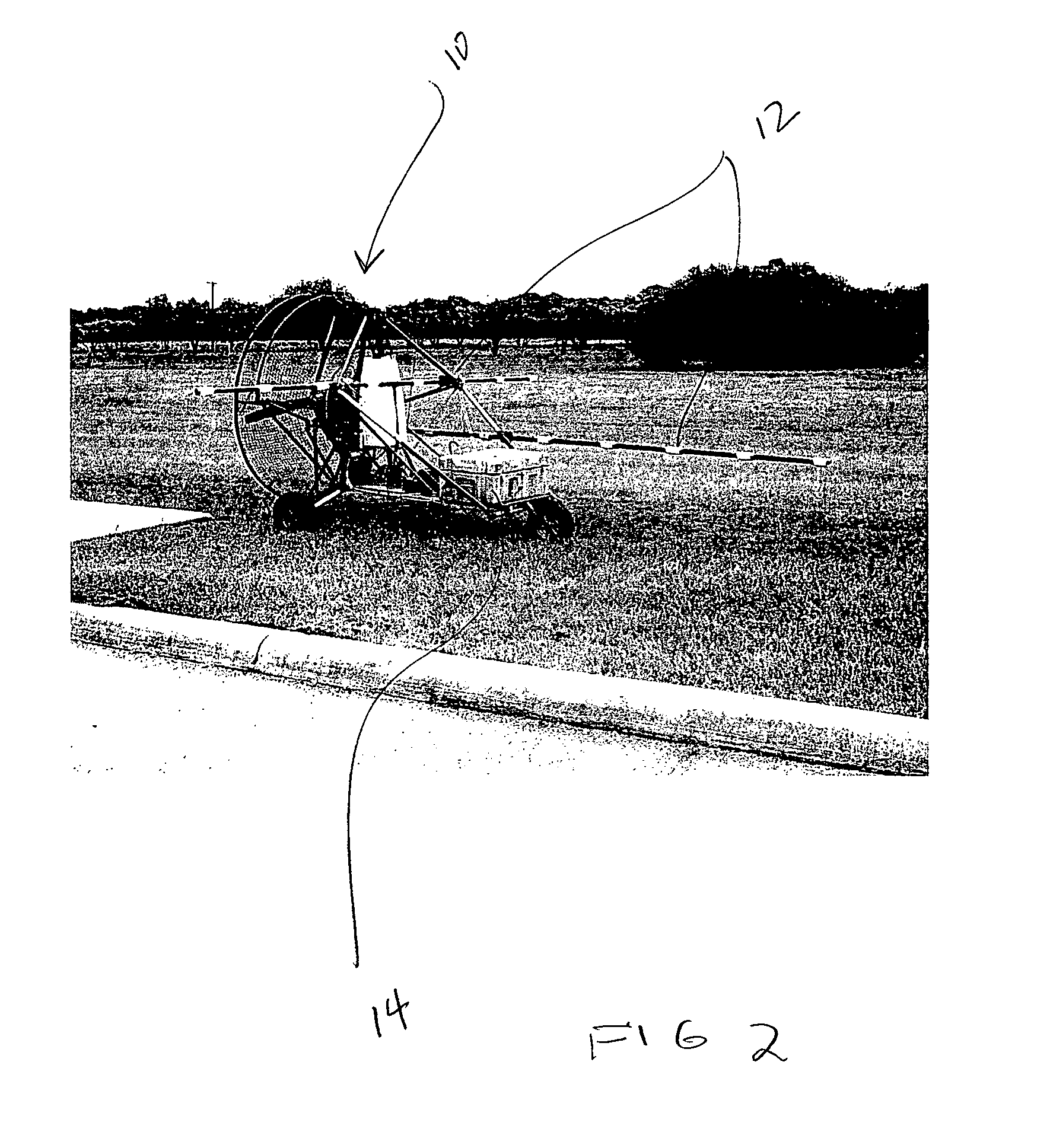Airborne collection of acoustic data using an unmanned aerial vehicle
a technology of acoustic data and unmanned aerial vehicles, applied in the field of surveillance systems, can solve the problems of engine noise interference, exhaust gas noise generation by fuel-burning engines, and uav platforms for remote acoustic data collection, and achieve the effect of adequate directionality and excellent data
- Summary
- Abstract
- Description
- Claims
- Application Information
AI Technical Summary
Benefits of technology
Problems solved by technology
Method used
Image
Examples
embodiments
Experimental UAV Embodiments
[0053] In accordance with the above-described concepts, various UAV platforms have been adapted for airborne acoustic data collection and have been experimentally tested. These include gas-powered and electric-powered radio controlled (RC) airplanes and a large powered parafoil UAV. The different platform sizes afforded a study of applicable array physics including the effects of array aperture and population density.
[0054] Referring again to the general depiction of FIG. 1, in each test embodiment, the microphone array 12 contained 16 microphones, configured as two orthogonal 8-element arrays. The test UAV's and their arrays were constructed in three sizes: a 3-½ foot array with 6″ spacing mounted on an electric powered RC glider, a 7 foot array with 12″ spacing mounted on a large RC airplane, and a 14-foot array with 24″ spacing mounted on a large autonomous gas-powered parafoil. The design frequencies were 800-1000 Hz, 400-500 Hz, and 176-275 Hz, resp...
PUM
 Login to View More
Login to View More Abstract
Description
Claims
Application Information
 Login to View More
Login to View More - R&D
- Intellectual Property
- Life Sciences
- Materials
- Tech Scout
- Unparalleled Data Quality
- Higher Quality Content
- 60% Fewer Hallucinations
Browse by: Latest US Patents, China's latest patents, Technical Efficacy Thesaurus, Application Domain, Technology Topic, Popular Technical Reports.
© 2025 PatSnap. All rights reserved.Legal|Privacy policy|Modern Slavery Act Transparency Statement|Sitemap|About US| Contact US: help@patsnap.com



